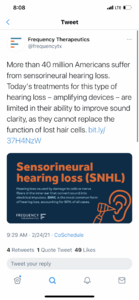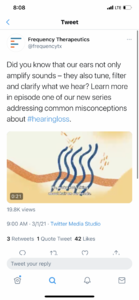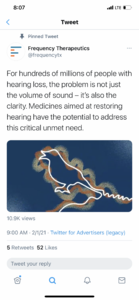I had an Ultra High Frequency audiogram done and the results were more or less what I expected and also threw up a caveat I was hoping for. I'd like to share for analysis on one of the current theories (below).
@FGG @Diesel @Aaron91 @serendipity1996
This is an overview of my symptoms.
View attachment 43980
Standard audiogram is pretty normal to 8 kHz.
Extended audiogram reflects what I think is going on with my ears pretty accurately. An average of approx 10 dB lower for left ear across the range except for at 14 kHz. This 14 kHz left ear value is significant to me because the left ear tests were all dull in comparison to the right ear except for one range which I think was 14 kHz and was like a gun shot in my left ear at each volume increment (physically startling - this was the caveat I was hoping for, something going against the trend). I reckon this 14 kHz region is where my hyperacusis / noxacusis is.
View attachment 43978
I've got a few theories on it, this is the main one. It's apparent there is more ultra high frequency hearing loss in the left ear in general but if it was the 14 kHz range of tests for the left ear that was so much more startling (extra gain-like), it makes me think there's something different about the damage in this area and I wonder if this is something to do with increased ribbon count around this frequency (increasing the likelihood of type II action potential). I suppose it actually doesn't even matter where this startling frequency was, I'm just assuming it is 14 kHz as this is where the trend was bucked.
I unfortunately did not think to ask what that exact frequency was at the time and only thought of it after I'd started analyzing on the way home. I would put the frequency around 14 kHz though, up there but definitely not in the heights of the 16 kHz - 20 kHz range which were pretty obvious. I'm hopeful for FX-322 for noxacusis for this scenario to be able to restore these high frequency hair cells (apart from maybe one or two special factors).

 Member
Member

